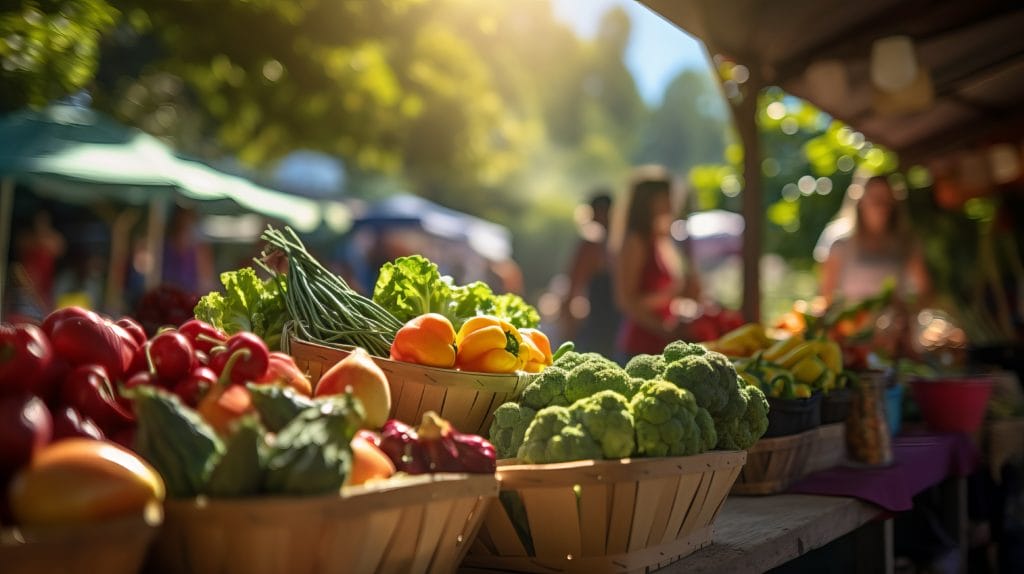Last Updated: May 31, 2024
What does success look like for a food business?
When Mimi Nguyen and her husband moved to the U.S. 16 years ago, she struggled to find Vietnamese coffee in the States that reminded her of what she was used to back home in Vietnam. As a result, her premium coffee brand Cafely was born.
“Success for us is more than just profit margins or the number of bags of coffee we sell. It’s about creating an experience, a connection with our customers through our unique Vietnamese coffee blends. When I see someone take that first sip of our coffee and their eyes light up with delight, that’s success to me.”
—Mimi Nguyen, founder of Cafely
Cafely is just one of many food business success stories—Mimi’s passion for the perfect cup of coffee led to a thriving business receiving accolades from Bon Appétit, The New York Times, Forbes, and the Food Network. But how did they get there? And is this what success looks like for all food businesses? Our top tips for success are listed below.
Top 9 Tips for Food Business Success
Every business is unique, but there are some markers of success that are true for all food businesses. See how to make your food business successful, as well as what common mistakes to avoid as your business grows.
1. Know Your Niche
Think of ways to put a twist on your menu and stand out. Do some competitive analysis—what do (or can) you offer that your competitors don’t?
Look into food industry trends like offering gluten-free options, using organic ingredients, or even using locally grown ingredients from local farmers to give your business an edge.
Whatever you do, don’t forget to advertise this to your customers! You can do a lot of work behind the scenes to set your business apart from the rest, but if your customers don’t even know about it, it won’t have as big of an impact.
2. Invest in a Great Website
Having a website lends credibility to your business. It puts all the info your customers need to know in one place—you can tell your story, include your menu and prices, and display location information, a photo gallery, press and accolades, or even sell online.
Just make sure it’s clear, easy to navigate, and accurately reflects your business’ branding (colors, logos, etc.). Wix and Squarespace are great website builders if you feel like doing it yourself, but paying a professional to create one for you might be well worth the cost.
3. Be Active on Review Sites
Review sites are incredibly important for attracting customers. After all, 50% of customers say they trust reviews as much as family or friend recommendations.
The most popular review sites for food businesses include:
People will have greater confidence buying from you if they’re able to read reviews from previous customers. You can also learn a lot about your customers and adjust your business strategy based on the feedback you get here—more on that later.

4. Build a Social Media Following
Think of social media as your portfolio. It gives you the opportunity to showcase your food and attract customers conveniently wherever they are. Not to mention that 50% of consumers say that social media influences which restaurants and food businesses they choose to buy from.
About 50% of Instagram content is food-related. You can post pictures, Stories, and Reels of your delicious food on Instagram where customers can be enticed to visit your business. Learn how to promote your food business on Instagram and claim your free copy of our eBook: How to Make Your Food Business Stand Out on Instagram in 2024.
5. Get Food Vendor Insurance
Owning and running a food business is a lot of hard work, but when it’s your passion it feels like a labor of love. One of the best things you can do to protect your business and keep your finances secure is to carry food vendor insurance.
Insurance acts like a shield when things go awry, like a customer having an allergic reaction to something you served them or your generator getting stolen while your food truck is parked at an event. The resulting claims from incidents like these can be anywhere from a thousand to hundreds of thousands of dollars.
By carrying insurance, you can keep your business up and running even when an expensive accident occurs. You’ll have help paying for legal defense fees or replacing equipment instead of having to pay entirely out of pocket yourself. Get affordable food business insurance starting at just $25.92 per month from Food Liability Insurance Program (FLIP) today!

6. Provide Great Customer Service
Over 80% of customers say that a good customer service experience makes them more likely to purchase from that business again in the future. Excellent customer service isn’t just being friendly to your customers, though that is an important part of it. It also means:
- Actively listening to them
- Fixing problems promptly
- Having attentive and empathetic employees
- Responding quickly to customer complaints and inquiries
7. Hire Help When You Need It
Sometimes you need an extra set of hands—or two! Most food businesses will reach a point where more employees are needed to provide a high level of customer service and increase production. Hiring people to work in jobs like these gives you time back to focus on the bigger picture of growing your business:
- Dishwashers
- Cashiers
- Delivery drivers
- Servers
- Line cooks
- Bartenders
In the words of Nguyen,
“Running a successful food business takes a village, so surround yourself with people who share your vision and work together towards a common goal.”

8. Offer Promotions and Incentives
Did you know that 80% of consumers say they will go to a new restaurant if they can get a discount?
It’s true—promotions are a pretty big deal when it comes to attracting new customers. Everything from discounts to combos to weekday specials will entice people to give your food business a try.
Of course, this isn’t just a great way to get new customers—it’s also effective for retention! Offering next-visit coupons or referral discounts is an awesome strategy for turning a first-time customer into a returning customer or getting them to spread the word to their family and friends.
Referral incentives are an especially good way to encourage word-of-mouth recommendations for your business. 92% of customers trust endorsements from their friends and loved ones over all other kinds of marketing, so generating recommendations can result in big revenue gains for your business.
9. Expand Revenue Streams
Consider creating extra revenue streams for your business to give customers more reasons to choose your business over your competitors in the area. It also means you won’t be entirely dependent on one single revenue stream, so if something were to disrupt that you wouldn’t be left in the lurch.
To take your business to the next level, you could offer things like:
- Catering services
- At-home delivery
- Food kits
- Family-sized meals
- Cooking classes
What you choose to offer will differ depending on the nature of your business. Experiment and figure out the best fit for you.
Common Food Business Mistakes to Avoid
Every business is unique, but there are some markers of success that are true for all food businesses. See how to make your food business successful, as well as what common mistakes to avoid as your business grows.
Not Marketing Your Business Enough
When asked what advice she had for business owners, Nguyen said,
“Don’t ignore the importance of marketing. You could have the best product in the world, but if nobody knows about it, what’s the point?”
Resisting Change
As humans, we tend to be creatures of habit who opt for the familiar and avoid change. The same can be true for business owners. But as the Greek philosopher Heraclitus once said, “There is nothing permanent except change.”
Let’s say you’re a home baker and some of the menu items you sell are cranberry muffins made with your grandma’s signature recipe, but they just aren’t selling well and nobody seems to like them. It might be hard to take them off the menu and replace them with something your customers actually want, but you should embrace this change and see it as a chance to grow and evolve your business.
One of the keys to success in the food business is being flexible and willing to change to meet your customer’s demands. This doesn’t mean you should change your menu any time you get one negative review or a dip in sales, but don’t let resistance to change stop you from improving your business.

Ignoring Your Customers
Listening to your customers is one of the most crucial aspects of running a successful food business. As Nguyen puts it, one of the biggest mistakes you can make is “not understanding your target market. You need to know who you’re selling to and what they want.”
There are plenty of ways to get feedback from your customers, including sending out regular surveys or polling them via email or social media. You can gain the same types of insights from these results as you’d get from reading reviews of your business.
Speaking of reviews, one great way to show customers that you aren’t ignoring them is to respond to the online reviews you get! You can thank people for their kind reviews while also responding to negative feedback, apologizing for their unsatisfactory experience and offering to make it right.
Frequently Asked Questions (FAQs)
How do I start a successful food business?
- Do your research: Learn who your competitors are, what works well in your market, and where the gaps are. Participate in events like food festivals near you to see how customers react to your product.
- Build your brand: Choose a name for your business, decide on your brand story/message, and create a logo that represents your business.
- Use the right equipment: Rent a commercial kitchen space to get access to industrial-grade equipment for prepping and cooking food. This can be a game-changer if you’re starting a food business from home.
- Market your company: Promote your business to potential customers through social posts and ads, send postcards to people in your area or who fit your ideal buyer type, and create free business listings on Yelp and Google.
How much do food business owners make?
Restaurant owners can expect to see profits ranging from $60,000–$160,000 per year, with fast food or quick service restaurant owners making $70,000–$100,000 annually.
Food truck operators can make anywhere between $20,000–$100,000 per year, depending on the size of their operation.
Small to medium-sized catering businesses have profits ranging from $30,000–$200,000 per year, but larger operations can see earnings exceed this $200,000 mark.
How can I be successful in the food industry?
Food industry success requires a combination of business smarts, market understanding, adaptability, and of course, culinary skills. If you are always educating yourself on good business practices, listening to your customers, adjusting your business strategy, and providing a quality food experience you will increase your chances of success.
Start Your Journey to Food Business Success
Now that you’ve got some tips and are aware of potential pitfalls, it’s time to start writing your own success story!
Whether you’re just getting started or looking to take your business to the next level, FLIP is with you every step of the way. Best of luck on your food business journey!

By Alex Hastings
Alex is a Marketing Copywriter at Food Liability Insurance Program (FLIP). In her free time, she enjoys reading, birding, traveling, and finding any excuse to get brunch.


